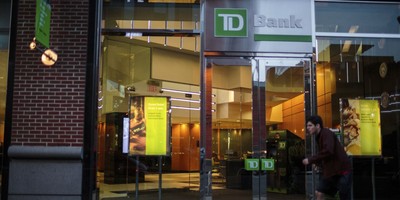Despite atheists' attempts to keep our national motto ("In God We Trust") from being engraved on the walls of the new 580,000-square-foot Capitol Visitor Center, the inscription was indelibly etched recently in large, bold and deep letters. And the Pledge of Allegiance soon will follow.

It's about time that good news came out of Washington. But this shouldn't be shocking news or even a contested matter. For the very words of the national motto are inscribed on our currency. They even are etched above the speaker's rostrum in the House of Representatives.
Only in our modern age have skeptics and secular progressives fought God in America. Religious inscriptions on Washington's other buildings testify to yesteryear's commitment to our Judeo-Christian heritage.
For example, in front of the Reagan Building is a statue titled "Liberty of Worship," which is resting on the Ten Commandments.
On the aluminum capstone at the very top of the Washington Monument are the chiseled words "Laus Deo" (Latin for "Praise be to God").
A statue of Moses holding the Ten Commandments is in the rotunda of the Library of Congress.
In addition to the words "In God We Trust" within the chamber of the U.S. House of Representatives, is it just a coincidence that Moses is the central figure and the only frontal-depiction bas-relief looking down on Congress of 23 reliefs of great historical lawgivers?
A stained-glass window in the chapel of the U.S. Capitol depicts George Washington with the words of Psalms 16:1 written around him and the words "This Nation Under God" above his head.
The Ten Commandments also are displayed on the floor of the National Archives, just 100 feet or so in front of the original copies of the Declaration of Independence and the Constitution.
Recommended
The prayer of President John Adams, the first president to occupy the White House, was inscribed on the mantel in the State Dining Room: "I pray Heaven to bestow the best of Blessings on this House and all that shall hereafter inhabit it. May none but honest and wise Men ever rule under this roof."
And Moses and/or the Ten Commandments are depicted a whopping 64 times on the U.S. Supreme Court building.
Do we believe any of these Judeo-Christian displays could be erected today in Washington, let alone in any other civic setting across the country? Why is it that those in yesteryear didn't decry them as violations of the separation of church and state? It's because they didn't see displaying God or religion as a violation of the First Amendment but a practice of it.
That is one of many facts about America's Founding Fathers that I explain in my new book, "The Official Chuck Norris Fact Book," a fun yet inspirational and educational book in which I share my 101 favorite Chuck Norris "facts" and 101 related stories that pivot around five core values: freedom, family, faith, fitness and fight. (Set for release Nov. 1, it is now available for pre-order on Amazon.com for less than $10, and proceeds will go to help http://www.KickStartKids.org.)
Last week, I gave a sneak peek of a "Freedom" entry from the book. I discussed the Second Amendment and our right to bear firearms. In this column, I'd like to share an entry from my "Faith" code in which I discuss the First Amendment.
Official Chuck Norris Fact No. 54:
"They wanted to put Chuck Norris on Mount Rushmore, but the granite wasn't tough enough for his beard."
Let's be honest ...
One of the geniuses of America's Founding Fathers was to provide and secure a foundation for our freedom of religious belief. The First Amendment simply reads, "Congress shall make no law respecting an establishment of religion, or prohibiting the free exercise thereof; or abridging the freedom of speech, or of the press; or the right of the people peaceably to assemble, and to petition the Government for a redress of grievances."
When Thomas Jefferson originally penned his legendary commentary on the First Amendment -- "a wall of separation between Church and State" -- in his letter to the Danbury Baptists in 1802, he was concerned with prohibiting the domination and legislation of religious sectarianism in government, as it was back in England and even in some early colonies, such as Virginia. However, he was not trying to rid government of religious influence.
That does not mean we enforce one religion on all people -- that is what the First Amendment protects us from. I believe in the separation of religious sectarianism from government and protecting our religious institutions, such as churches, from the long arm of the federal government. I don't believe, however, in an erroneous interpretation of the Bill of Rights, or of Jefferson's and Madison's interpretive words, that would restrict religious or speech freedoms or produce a secular-progressive barrier that bans any religious influence in society.
Whatever your religious persuasion, don't be ashamed of it. This is America. And that's one of the things that still makes us a great nation. In God we trust.
They said it ...
"There! His Majesty can now read my name without glasses. And he can double the reward on my head!" -- John Hancock, after signing his name in large letters on the Declaration of Independence
Chuck's Code (Faith):
"In God We Trust -- all others we search." A statement from my friend Dave LaGroue, who is a California Highway Patrolman.























Join the conversation as a VIP Member